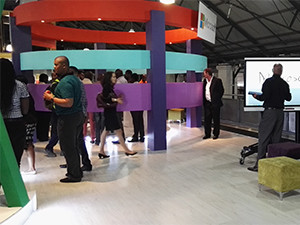
As the Department of Education commits to providing 21st century learning tools and skills to learners, training on how to use these smart devices has become a topic of much debate.
Analysts have weighed in, noting that providing technology in schools is all good and well, but the approach needs to be holistic.
According to analysts, teaching methodologies, teaching culture, the curriculum and measurement of learner progress should be modified, with training on how to effectively use smart devices in the schools as the most important aspect.
To meet these challenges, the Sci-Bono Discovery Centre has decided to step up the department's efforts by providing intensive learner and teacher training.
Smart training
Starting in October, Sci-Bono will offer both teachers and learners intensive training on how to use smart devices that are being rolled out in some Johannesburg schools.
In July, the Gauteng Department of Education (GDE) aggressively rolled out 17 000 tablets and 1 800 3D LED interactive boards across 375 schools.
According to Anele Davids, director of teacher development at Sci-Bono, it is working with GDE e-learning officials to run training sessions for school teachers within the districts.
"We will be running a serious training programme for teachers and for our kids," he notes.
Davids says the plan is to start the training programme by the beginning of next month. "Part of our plan is to run a dual programme for teachers and kids, so that when the kids come here they see the same smart devices they currently have in their schools.
"This is not about learning how to type on the computer. We want teachers to use technology inside the classrooms and use it to teach, and that's why it is so important that the training we provide is in-depth and enables the teacher to use the technology provided by the department."
Sci-Bono is a science centre in the heart of the Johannesburg CBD. It supports maths, science and technology education, and offers innovative, dynamic learning experiences to build SA's science, engineering and technology capacity.
More than 2 500 school children visit the science centre on a weekly basis.
Exhibition centre
Sci-Bono's move to offer teacher training falls in line with Microsoft SA's decision to sponsor a year-long exhibition at the science facility. The exhibition will be used to showcase the future of classrooms to local learners and teachers.
According to Microsoft, 60% of SA's schools have no computer lab facilities.
This exhibition aims to enhance the vast technology experience to young people, says Davids. "This centre is intended for young people and we invite all the young people in the province to come and be a part of the exhibit."
Featured in the exhibition are various smart devices that include Xbox consoles, smart screens, and two-in-one devices loaded with education apps.
Microsoft's global vice-president of education, Anthony Salcito, says Microsoft is providing IT training and opportunities to young people to equip them with computational-thinking and problem-solving skills.
"More and better education, combined with early access to the tools and skills used in the workplace, are proven to help create healthier communities, economies and workers who are ready to enter the workforce," said Salcito.
Also speaking at the exhibition, Zoaib Hoosen, MD of Microsoft South Africa, said young South Africans must not only use technology but also create technology by learning how to program.
According to Hoosen, Microsoft has trained more than 50 000 teachers in learning how to use technology in the classrooms.
"Local initiatives such as the Microsoft Innovative Educator expert programme helps local teachers to integrate technology into their lesson plans and make use of inventive teaching methods to not only ensure students know how to use technology but are enabled to create technology," he said.
Share